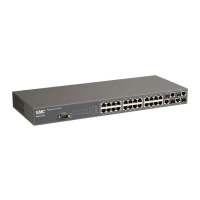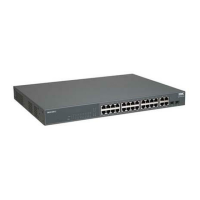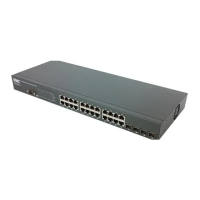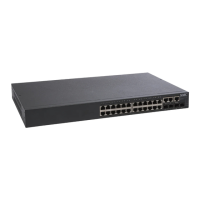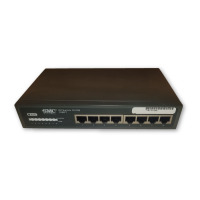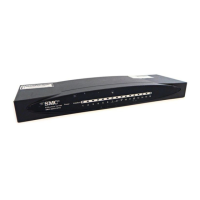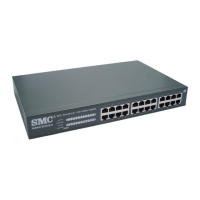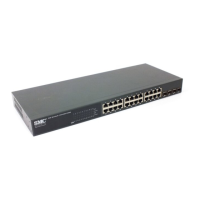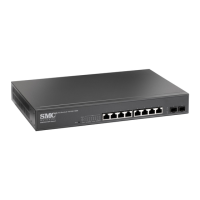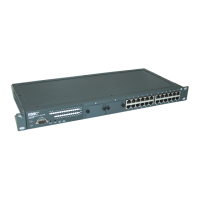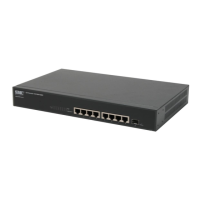IP I
NTERFACE
C
OMMANDS
36-4
ip address
This command sets the IPv4 address for the currently selected VLAN
interface. Use the no form to restore the default IP address.
Syntax
ip address {ip-address netmask | bootp | dhcp} [secondary]
no ip address
• ip-address - IP address
• netmask - Network mask for the associated IP subnet. This mask
identifies the host address bits used for routing to specific subnets.
• bootp - Obtains IP address from BOOTP.
• dhcp - Obtains IP address from DHCP.
• secondary - Specifies a secondary IP address.
Default Setting
DHCP
Command Mode
Interface Configuration (VLAN)
Command Usage
• If this router is directly connected to end node devices (or connected
to end nodes via shared media) that will be assigned to a specific
subnet, then you must create a router interface for each VLAN that
will support routing. The router interface consists of an IP address and
subnet mask. This interface address defines both the network number
to which the router interface is attached and the router’s host number
on that network. In other words, a router interface address defines the
network and subnetwork numbers of the segment that is connected to
that interface, and allows you to send IP packets to or from the router.
• Before you configure any network interfaces on this router, you
should first create a VLAN for each unique user group, or for each
network application and its associated users. Then assign the ports
associated with each of these VLANs.
• You must assign an IP address to this device to gain management
access over the network or to connect the router to existing IP
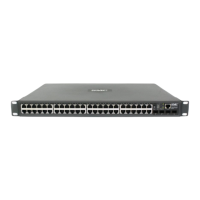
